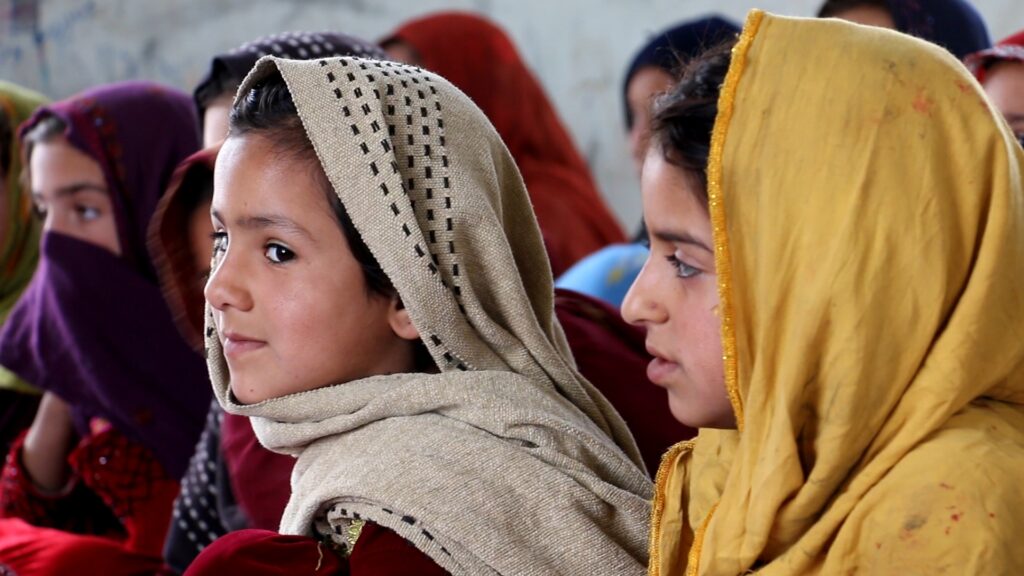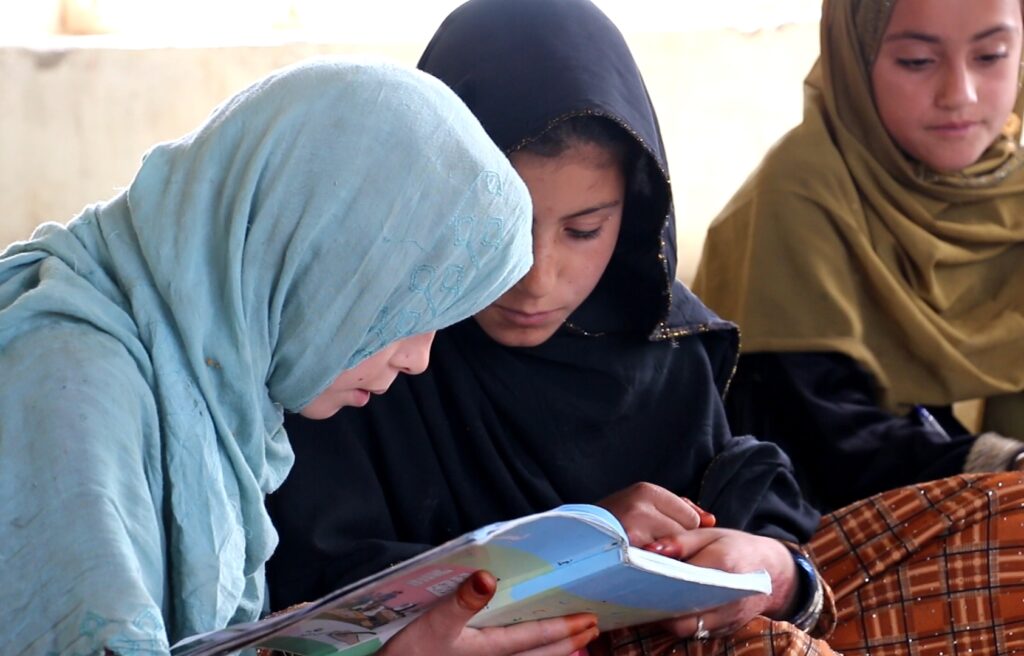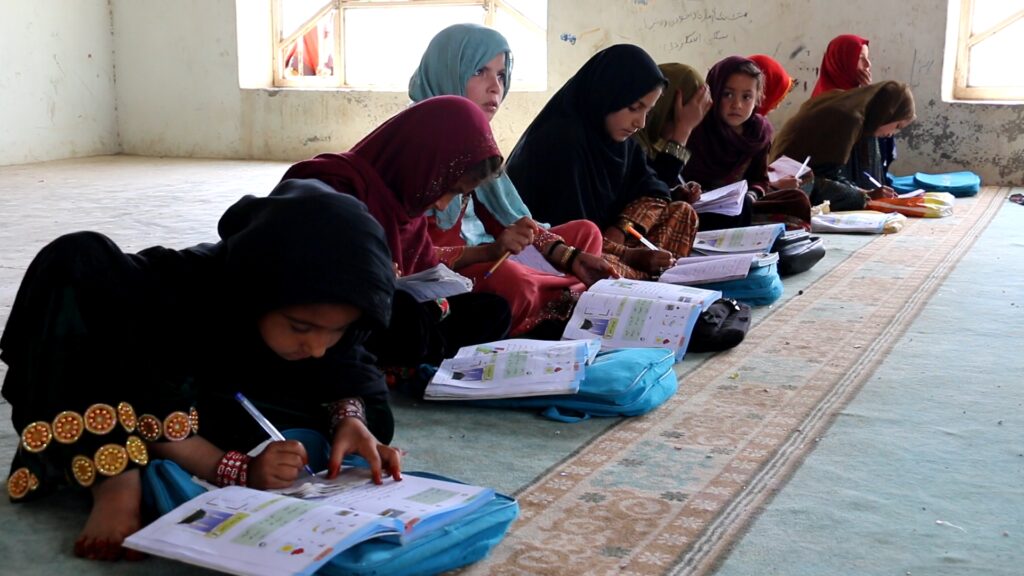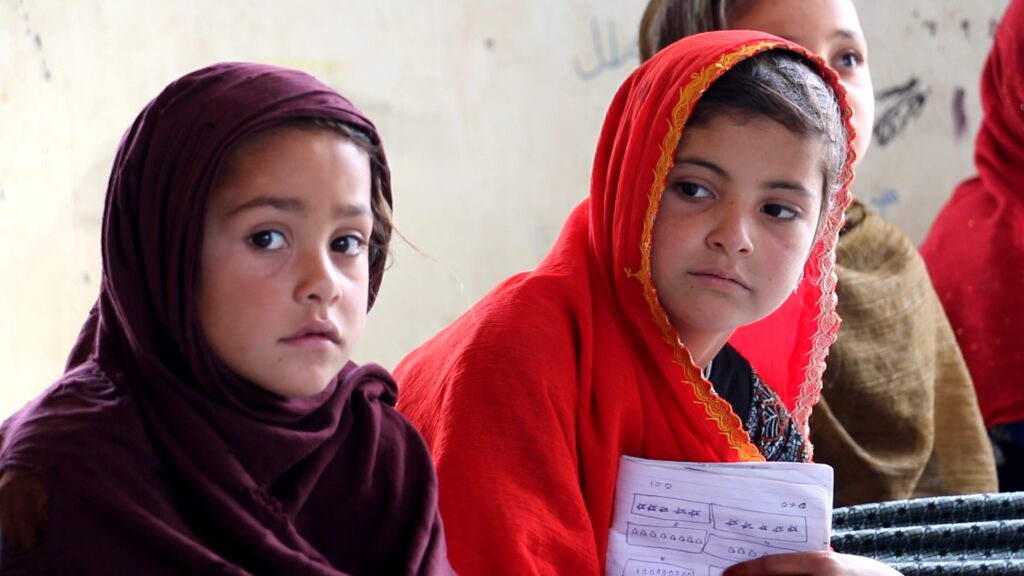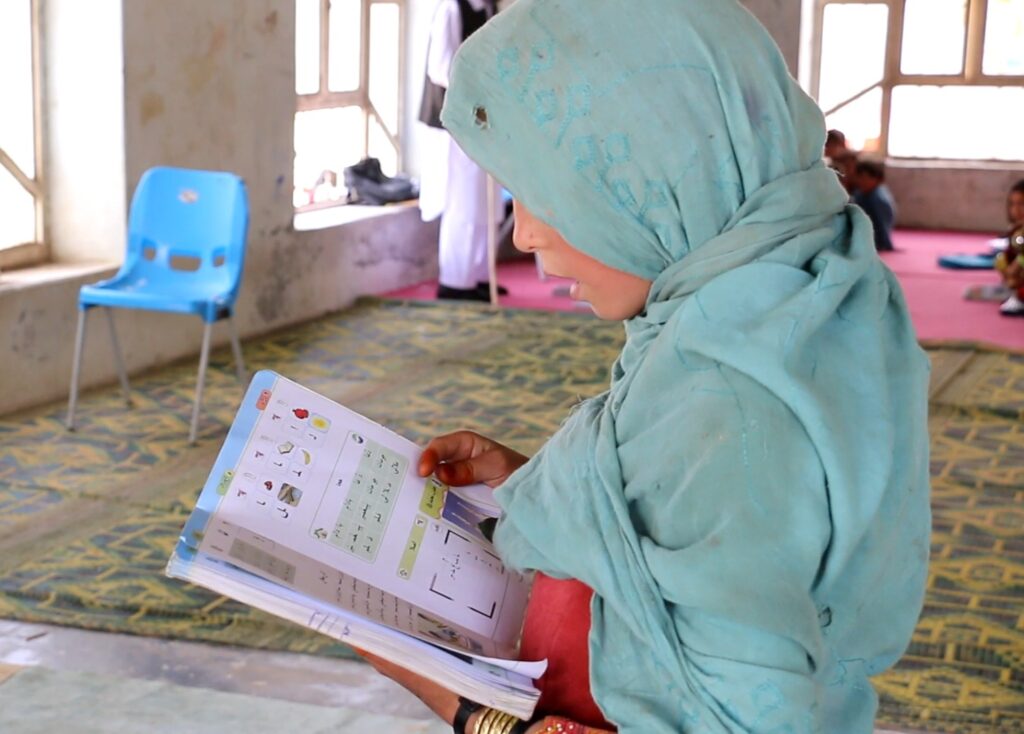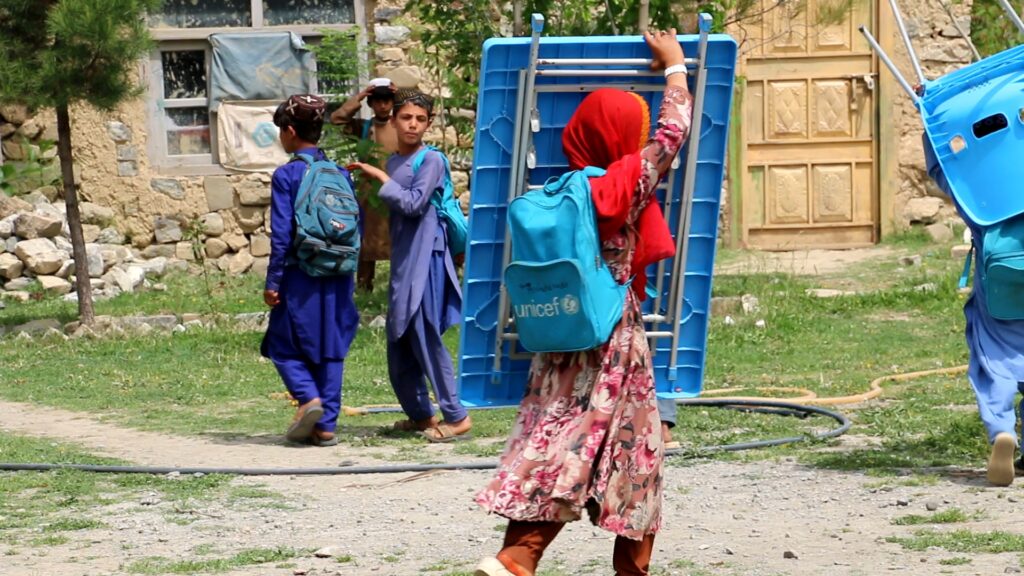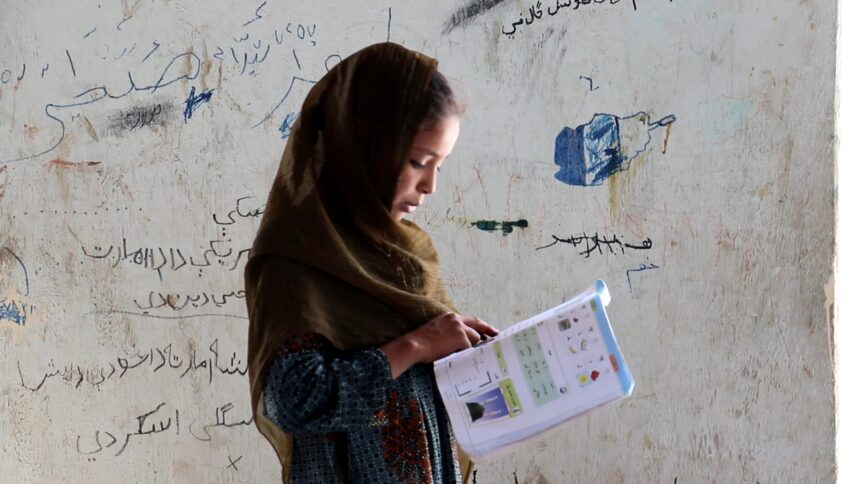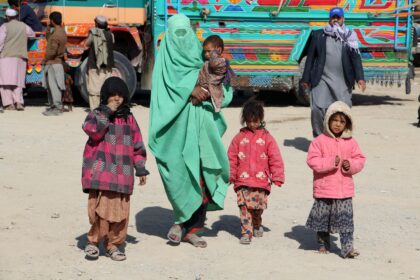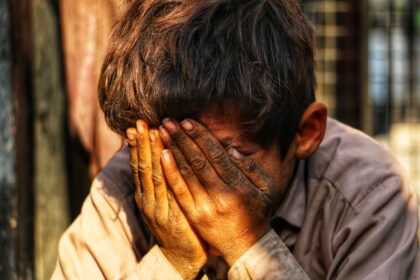In a room that defies even the basics of structure, where walls stand but the floor itself is missing—just hard, uneven earth beneath—a young girl stands silently, her eyes lost in the pages of a schoolbook. Her scarf is tightly wrapped around her head, her hands carefully cradling a textbook—an effort to protect the little she has.
There is no carpet, no tiles, no wood—just the raw ground underfoot, dusty and cold. The room is a skeleton of what a classroom should be: four stained walls holding the weight of faded ink and chipped paint, but offering no comfort, no warmth.
Behind her, the wall bears the marks of time: scribbles, faded lessons, and fragments of names, remnants of a classroom that once held more children, more structure, more hope. But today, few of them remain.
She doesn’t need a desk or a teacher to focus. Her eyes are steady, her finger tracing the lines of text. The world outside may be uncertain, but here, within these pages, something constant exists.
“Even if the school is closed, I still read. My book is my teacher now,” she says without looking up.
There are no chairs, no schoolbags, no proper chalkboard. Only a blank, peeling wall, a dirt-packed floor, and the unyielding spirit of a classroom built on determination. The girls’ bright headscarves add color to a space that would otherwise feel forgotten.
In this room, silence isn’t a sign of neglect—it’s anticipation. Every hand raised is a small act of resistance. Every correct answer, a claim to a future they refuse to relinquish.
“When I raise my hand, I feel brave. I want the teacher to know I am ready,” Zahra says, gripping her pen tightly.
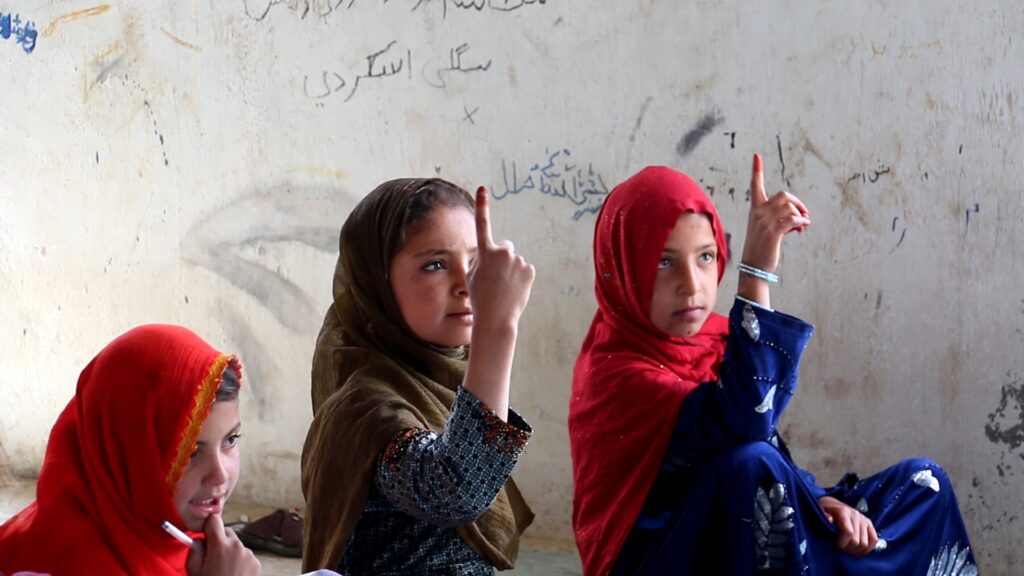
Since the Taliban’s return to power in August 2021, they have systematically dismantled educational opportunities for Afghan girls and women. Girls have been banned from attending secondary schools (grades 7–12) and universities, making Afghanistan the only country in the world to prohibit female education beyond primary school.
According to UNESCO, these bans have deprived at least 1.4 million girls of their right to education.
UNICEF warns that if these restrictions persist, over 4 million girls could be out of school by 2030.
The Taliban justify these measures with a strict interpretation of Islamic law, despite international condemnation and the long-term consequences for Afghanistan’s future.
For many Afghan girls, the simple act of studying has become an act of defiance against a regime intent on erasing their presence from public life.
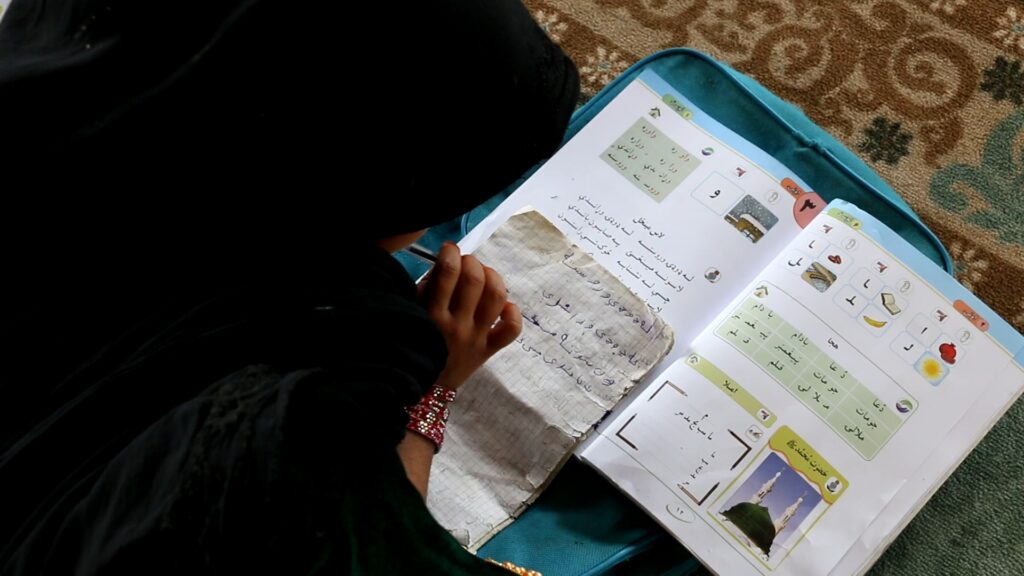
No Building, No Walls—Just the Open Sky
Under the vast, open sky, where the sun beats down relentlessly and the wind whispers through the dusty streets, a group of children gather each day to learn. They don’t have walls, windows, or even a roof over their heads. But they have each other, and they have the will to learn.
A group of boys and girls, ranging from the youngest to teenagers, sit in the dirt, their notebooks spread out in front of them. The teacher stands before them, using a piece of chalk to scribble lessons on a weathered blackboard propped up against a tree. There’s no shelter, no desk, no chairs, just the earth beneath them and the sky above.
“We don’t need a building. We need to learn,” says Amir, a 12-year-old boy who has attended school in the open for as long as he can remember. “Sometimes, it rains, and we just wait for it to stop. But when it does, we keep going. We have no choice.”
Their school is a patch of land, a temporary space where learning is an act of perseverance. The children carry their books and pens, but most of them wear no shoes, their feet often covered in dust. The sun’s heat can be unbearable, but they sit for hours, their focus unbroken.
“When I am studying, I forget everything around me. I can’t stop thinking about the future. I want to be a doctor, but I don’t know if I’ll ever have the chance,” says Mariam, a 15-year-old girl whose family fled the violence of the city and now lives in a small rural area where schools are nonexistent. “But I come here every day because I want to learn. I don’t care about the walls or the roof. I care about my books.”
Despite the lack of infrastructure, these children continue to study, creating their own classroom with the limited resources they have. Their teacher, often an elder from the village, stands as a figure of hope—despite the challenges they face, they push forward.
“The rain makes it harder. Sometimes the wind blows the blackboard over, and we have to pick it up again,” says Rahim, a young teacher who volunteers his time to help the children learn. “But the children don’t complain. They just want to keep learning, no matter what.”
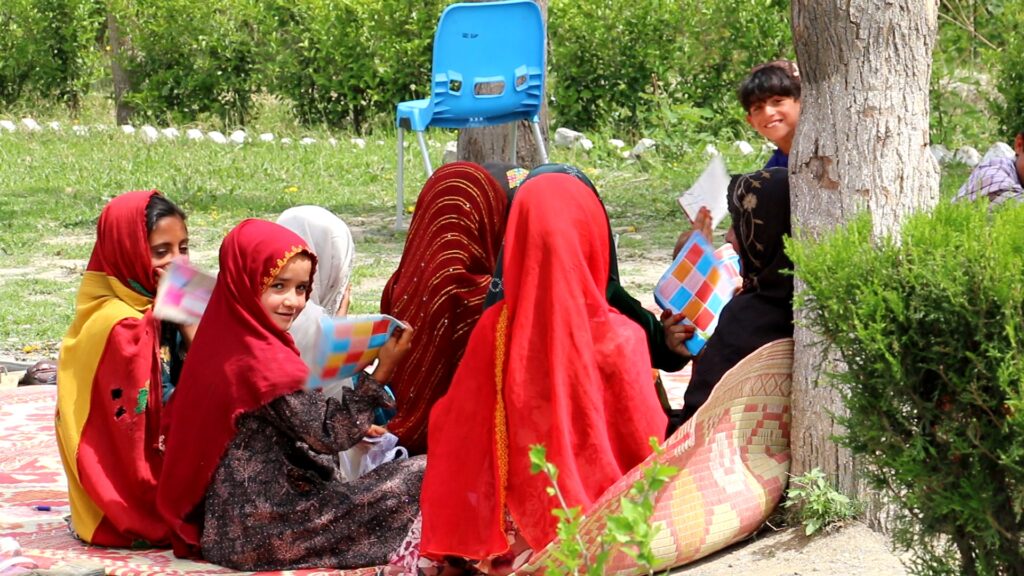
The children’s resilience is inspiring, but it’s also a reflection of a much larger crisis. In parts of Afghanistan, especially rural and conflict-affected regions, there are no school buildings at all. The children who study in the open do so because they have no other choice. Their families often cannot afford to send them to urban schools, and the lack of resources has made education nearly impossible in these areas.
Yet, despite the harsh conditions, the desire to learn is unwavering. Under the scorching sun, in the chill of the morning air, and even in the rain, these children gather. Their determination defies the circumstances, showing the world that the need for education is greater than any obstacle they face.
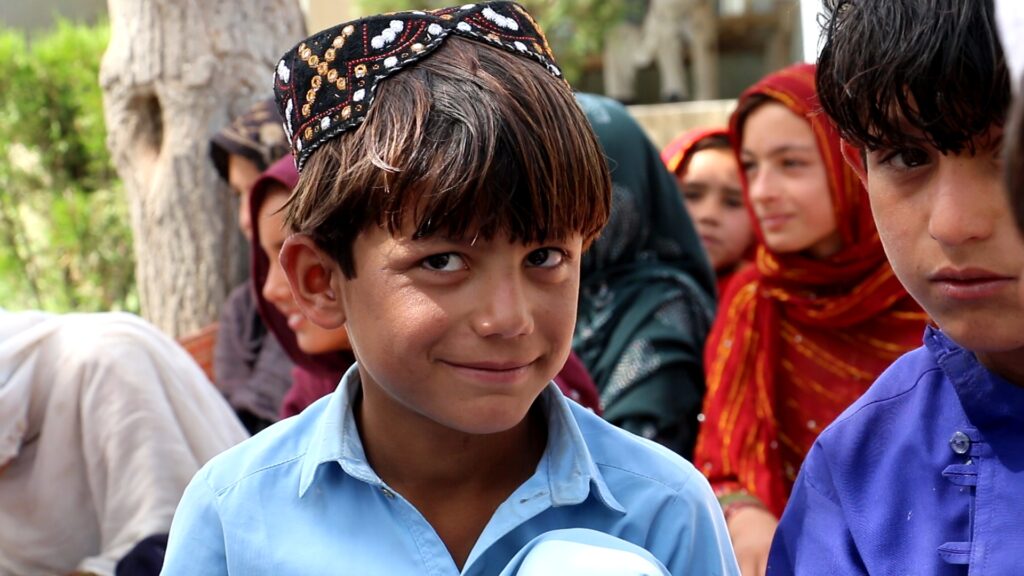
A Nation of Empty Schools
A substantial number of schools across Afghanistan operate without proper buildings, compelling students to study under open skies or in makeshift shelters. According to the Ministry of Education, approximately 7,000 schools currently lack physical structures—an alarming gap in basic educational infrastructure.
Regional Disparities:
Eastern Region: In provinces like Nangarhar, Kunar, Nuristan, and Laghman, 769 out of 1,895 schools (around 41%) operate without buildings.
Northern Region: In Baghlan, 209 of 527 schools (about 40%) lack structures, affecting more than 51,000 students.
Western Region: Ghor province suffers the worst, with over 70% of schools having no buildings at all.
Eastern Zone: Thousands of children in this area learn under trees or tents, with no access to proper classrooms.
An Education Denied
Girls’ Education: Since August 2021, an estimated 2.2 million Afghan girls have been barred from attending secondary schools and universities.
Future at Risk: Without intervention, UNICEF warns that more than 4 million girls may be out of school by 2030.
This educational crisis, compounded by infrastructure gaps and regressive policies, demands immediate global attention and sustained support. Afghanistan’s future depends on its children—and they are still trying to learn, despite everything.

The Day’s Last Lesson
As the final light of day filters through the broken windowpanes, the children begin to gather their things. No bell rings, no teacher calls the class to order—yet everyone knows the day is done.
A girl stands, brushing dust from her skirt, and gently lifts a small *plastic table, its legs scuffed and uneven from years of use. She carries it with care, her steps deliberate. A younger boy nearby picks up a *faded plastic chair, struggling slightly with its bulk before steadying it against his hip. Another child gathers scattered notebooks and a piece of chalk.
They move together, quietly and with purpose—restoring their fragile classroom for the next day. The table and chair are placed back in the corner of the room, beside the weathered blackboard that now leans patiently against the wall once more. No one tells them to do it. They just do.
“One day,” Zahra says, her voice soft but certain, “we’ll have a real school again. But until then, we make this one ours.”
She pauses before stepping outside, turning to take one last look at the bare room. The walls may still be cracked, the paint still peeling—but for a few hours today, it was a place of learning, of dreams whispered and knowledge shared.
Tomorrow, they’ll return.
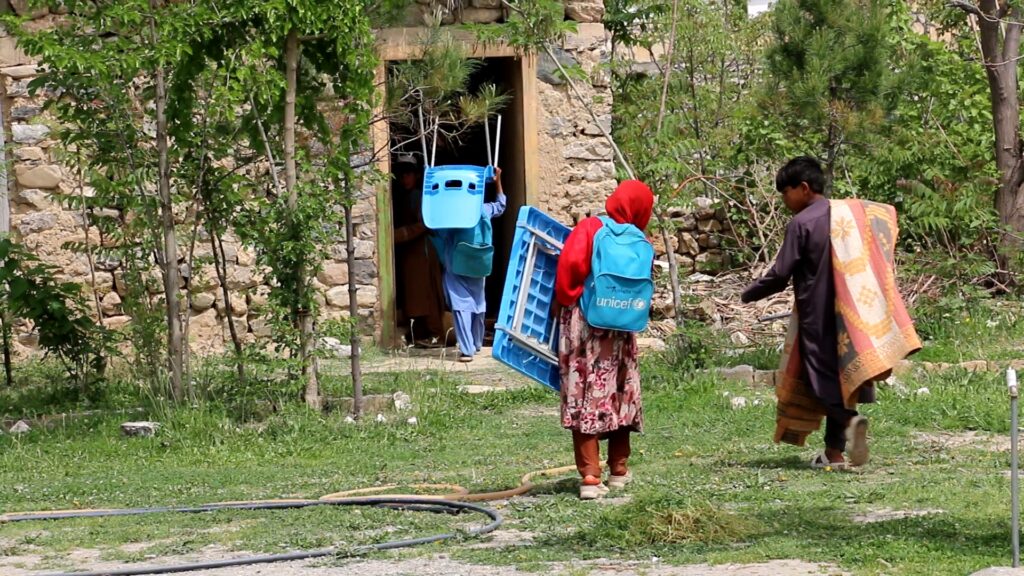
In Pictures
